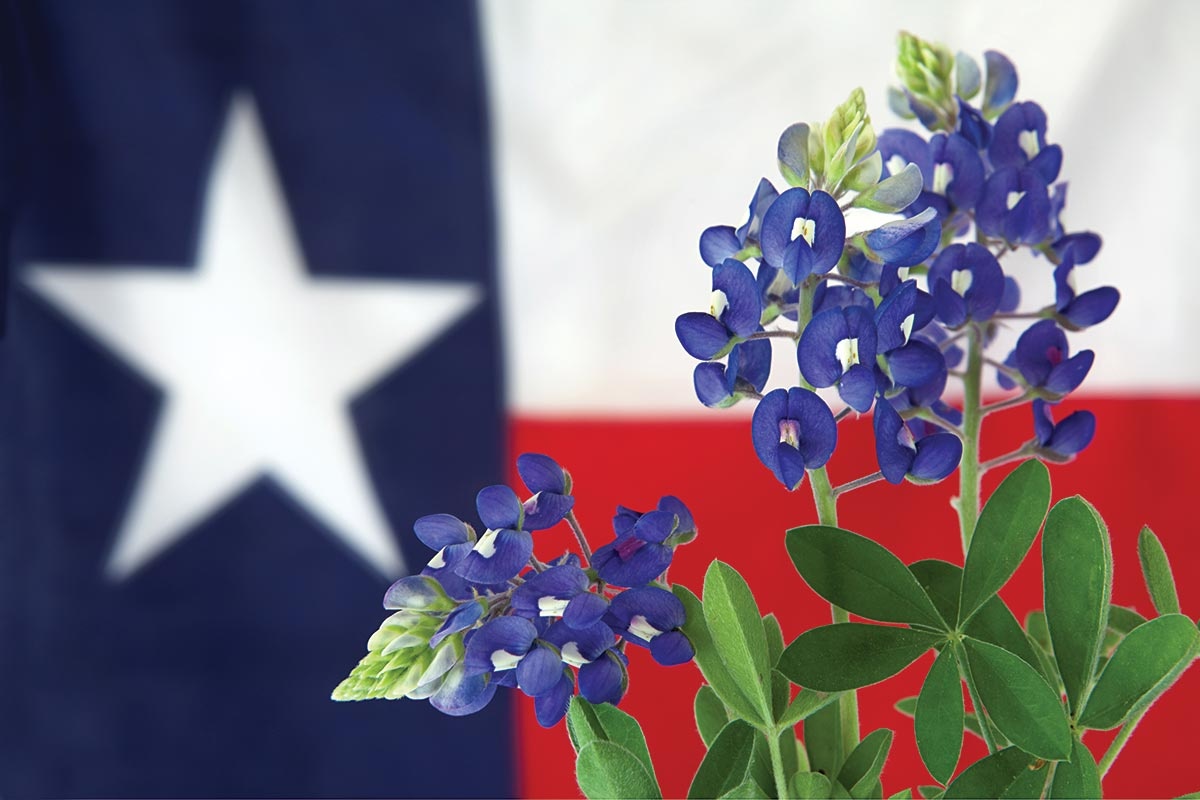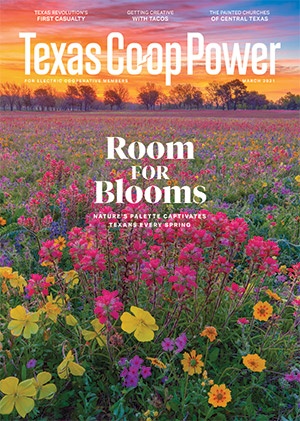The original state flower of Texas was a bluebonnet, but critics said the species, Lupinus subcarnosus, wasn’t worthy of the title. So lawmakers declared all varieties of bluebonnet as the official state flower, including the more popular Lupinus texensis.
You don’t have to speak Latin or be a horticulturist to fully appreciate Texas bluebonnets, which aren’t even always blue anymore.
A bluebonnet is a bluebonnet … until you really get to know them
Common names: Texas bluebonnet, bluebonnet, Texas lupine, buffalo clover, wolf clover, el conejo
This is our state’s most recognized bluebonnet that’s planted along roadsides. The annual, which has 6- to 18-inch stems, occurs in the state’s Blackland Prairie and Edwards Plateau regions.
Common names: Sandyland bluebonnet, Texas bluebonnet
This annual bluebonnet with 6- to 16-inch stems was named the first state flower in 1901. It grows in sandy loams found in southern Central Texas down to northern Hidalgo County.
Common names: Annual lupine, bajada lupine, Nipomo Mesa annual lupine
This tiny annual lupine with reddish-purple flowers and 2- to 6-inch stems occurs in the Trans-Pecos region.
Common names: Big Bend bluebonnet, Big Bend lupine, Havard bluebonnet, Chisos bluebonnet
This annual bluebonnet with 1- to 3-foot-tall deep-blue flowering spikes grows in the Big Bend.
Lupinus perennis ssp. gracilis
Common name: Sundial lupine
An uncommon perennial bluebonnet that’s found in southeastern Texas.
Common names: Nebraska lupine, dune bluebonnet, plains bluebonnet
This perennial bluebonnet reaches 2 feet tall and grows in the Texas Panhandle’s sand dunes.
Bluebonnet Color Varieties
(Shoppers beware: Many of these are not currently available commercially.)
Abbott Pink: Named for Carroll Abbott, who championed Texas wildflowers.
Alamo Fire: Introduced by Wildseed Farms and horticulturalist Jerry Parsons.
Barbara Bush Lavender: A variety of Texas bluebonnet selected by Jerry Parsons.
Grant’s Maroon: Named for horticulturalist Greg Grant.
Henry’s Red: Named for Henry Verstraeten, a San Antonio vegetable grower.
Lady Bird Johnson Royal Blue: Selected by Larry Stein, Jerry Parsons and R. Daniel Lineberger.
Prairie Angel: Introduced by Wildseed Farms and Jerry Parsons.
Purple Heart: Introduced by Douglass King Seeds and Jerry Parsons.
Texas Maroon: Developed by Jerry Parsons and Greg Grant, it’s also called Aggie Maroon.
Worthington Blue: Named for the Worthington Hotel in Fort Worth.
Sheryl Smith-Rodgers, a member of Pedernales EC, has counted more than 50 wildflower species at her Blanco home.


